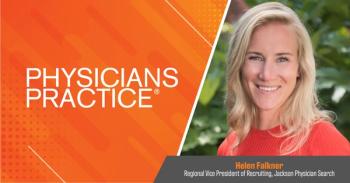
Lead through crisis with confidence: A health care leader’s playbook for resilience and reputation
Proactive crisis readiness equips health care leaders to navigate today’s permacrisis era, protecting brand reputation, sustaining patient‑care continuity, and preserving stakeholder trust when disruptive events strike.
A crisis is no longer a rare disruption — it’s a defining feature of modern leadership. Today’s health care executives don’t face just one crisis at a time. You manage many layered and compounding crises: labor disruptions, patient safety incidents, cybersecurity breaches, public misinformation, AI-driven disinformation and shifting regulatory demands.
We are now operating in an era many call 'permacrisis' — a time defined by ongoing societal disruption, where the next challenge is never far behind.
For health care leaders, this means crisis is not a matter of if, but when, making readiness a strategic imperative. Whether they are leading a small practice or a large health system, health care leaders must be prepared to lead through volatility without sacrificing trust, care quality or organizational integrity. Crisis readiness is not a reactive task. It’s a well-planned strategic imperative. Crisis readiness can protect brand reputation, support continuity and strengthen stakeholder relationships when they matter most.
When health care organizations lead with values and communicate with transparency and urgency, they don’t just survive disruption, they grow trust, culture and credibility in the process.
Protect what you’ve built before crisis hits
The first step in your crisis readiness journey is protecting what you've already built: your organization's hard-earned reputation. This reputation is one of an organization’s most valuable and vulnerable assets.
Health care brands are built on credibility. A single crisis — whether a data breach, malpractice claim or public protest — can unravel a brand reputation if not handled with speed and purpose. In a digital-first world, where every mistake can quickly become a headline, how you respond matters as much as what happened. Silence often creates more harm than the incident itself. Leaders must act fast, speak clearly and connect every message to the organization's core values.
Start here:
- Identify your top five reputational risks
- Align your leadership team on who leads response efforts
- Pre-approve messaging templates that reflect your values, not just legal language
This isn’t about crafting the perfect message — it’s about communicating in a way that reflects who you are and what you stand for.
Earn trust before you need it
Trust requires continuous, proactive investment. It’s both your most powerful asset and your most fragile. Internally, employees look to leadership for clarity in a crisis. Externally, patients and community members watch what you do, not just what you say.
Data tells us
But trust isn’t built through communication alone. It’s sustained through actions that align with your purpose. In a crisis, people pay close attention to whether you follow through on what you say. Do your decisions reflect your values even under pressure?
Your internal and external messages and actions must also align. What your staff hears should reflect what the public sees. Trust is earned through consistency and built with empathy. Speak early and be honest about what you know and what you don’t. Explain the actions you’re taking and how they reflect your values. When your words and actions align, trust follows and credibility grows.
Many organizations, however, overestimate the trust they’ve earned.
Trust-building actions:
- Align decisions with stated values even under pressure
- Create a unified messaging approach for employees and external audiences
- Follow through visibly on commitments made during disruption
Don’t let an old plan create new problems
With trust as your foundation, your next priority is ensuring your response systems are current and ready to activate. Most health care organizations created or updated their crisis plans during the COVID-19 pandemic. But in the years since, the risk environment has changed dramatically.
AI can now generate fake videos, alter clinical messages or spread disinformation in minutes. Hackers target electronic health records. Labor actions escalate quickly in public view. Turnover at the executive level means fewer people know how to activate your plan — if a current plan exists at all.
A crisis plan must be more than a document. It should be dynamic, accessible and well-rehearsed. Every leader should know their role. Every employee should understand the basics. Your plan should flex to distinct potential incidents, with scalable tiers and clear operational actions communication pathways.
Refresh your plan with these steps:
- Incorporate AI risks, misinformation and digital threats into your scenarios
- Review and update your crisis plan annually, and after leadership changes or major events
- Run tabletop drills twice a year with executive leaders and designated crisis team members
The best time to revise your crisis plan was yesterday. The next best time is before a headline breaks.
Prioritize continuity because care can't wait
Your responsibility to provide care doesn’t pause in the midst of a crisis. Even when systems fail, patients still need access. Your organization’s ability to maintain continuity and a high level of patient care — without compromising safety, service or trust — is one of the clearest tests of crisis readiness, and a challenge unique to health care.
Continuity isn’t just about keeping the doors open to care for patients. It’s about sustaining clinical quality, protecting employee well-being and ensuring patients receive accurate, timely information. Whether leading an independent practice or a complex health system, you must prepare to operate through disruption — not around it.
That level of preparation starts with a strong infrastructure and practiced coordination. Cross-functional response teams. Localized decision-making authority. Communication plans that reach patients and staff across multiple channels.
Essential continuity actions:
- Map your critical systems and identify points of failure
- Establish backup communication methods such as text, phone, signage, and digital tools
- Train clinical and administrative leads to coordinate clearly and calmly in real time
Continuity is more than best practice in health care. It’s a commitment to those who depend on you most. While disruption is inevitable, disorganized response doesn’t have to be.
Create a culture that responds with resilience
Your ultimate defense against crisis is your organizational culture — the values and behaviors that guide your team when systems are stressed.
Every crisis is a cultural stress test. It reveals whether your values are just words on the wall or whether they are deeply embedded in how you operate. Health care teams that trust leadership and feel informed respond with stronger unity. Teams left in the dark often fracture under pressure.
Leaders have the opportunity to set the tone in every moment. Show up early and speak honestly. Acknowledge what you know (and what you don’t) without fueling fear. Offer clear actions and anchor every decision in your organization’s purpose.
Crisis-ready cultures do not emerge overnight. They are intentionally built through communication, leadership modeling, psychological safety and continuous learning. Invest in those traits now, and your organization can emerge from disruption stronger than it started.
To support culture during a crisis:
- Define crisis response expectations in onboarding and role descriptions
- Recognize calm, mission-aligned action after high-pressure events
- Align internal messaging with your values and mission or purpose
Lead forward through uncertainty
Health care leaders cannot prevent crisis, but they can accept and prepare for the inevitability of a crisis and lead through one with confidence, clarity and care.
The health care practices that invest in crisis preparedness today will be the ones key stakeholders trust tomorrow. The clinics that communicate with transparency and humanity will retain staff during turbulence. The health care leaders who respond with values-driven purpose will find opportunity on the other side of disruption.
Your next crisis is coming. You decide today whether your organization will be ready to lead or forced to react. Resist the urge to feel overwhelmed. Start where you are by updating what’s outdated. Lead with purpose, and protect what matters most: your people, your reputation and the care your community counts on.
Ayme Zemke, APR, is Chief Client Officer and certified crisis expert at Beehive Strategic Communication. She brings more than 25 years of experience guiding executives across health care, education, financial services and manufacturing through crisis and change. Ayme specializes in helping mission-driven organizations lead with purpose and communicate with confidence during high-stakes moments.
Newsletter
Optimize your practice with the Physicians Practice newsletter, offering management pearls, leadership tips, and business strategies tailored for practice administrators and physicians of any specialty.




